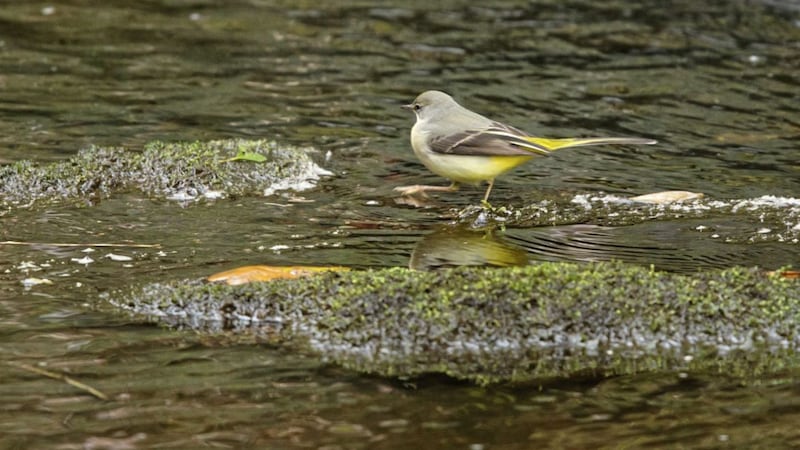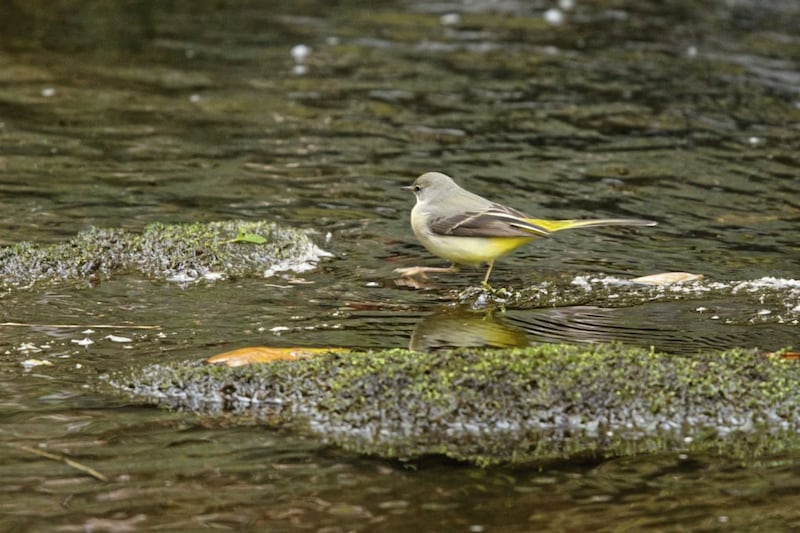LIKE Thomas Hardy’s Darkling Thrush, a local song thrush has for days now been leading the way in summoning spring from: "The bleak twigs overhead / In a full- hearted evensong’’ with "His happy good-night air’’.
The great-tit, with its repetitive teacher… teacher… teacher… call is also prominent on the local brae as each day awakens. These bird calls are a welcome response to increasing daylight and to winter’s loosening grip.
Another uplifting sight from these late winter days came to me from the bobbing and flitting of the often overlooked but striking grey wagtail Motacilla cinerea on the stones of a nearby river. Despite its name, the grey wagtail is yellow in colour with a brilliant yellow breast and undertail feathers, which contrast with its blue/grey upperparts. The male bird has a black throat with whitish stripes above and below the eye. The female has a much-reduced black throat while both birds have the typically long wagging tail just like its more familiar cousin, the predominantly black and white Pied Wagtail.
Printed pictures of the grey wagtail first occurred in Francis Willughby’s Ornithology (1678), the first organised ornithological work in England distinguished by its pre- Linnaean attempts at systematic classification and recognition of bird species. This work is considered to be the beginning of scientific ornithology in Europe.
Willughby died from pleurisy before its publication but his good friend, fellow naturalist and teacher John Ray, completed the engravings and published the original edition Ornithologiae libri tres in 1676 and the English version two years later.
The favoured habitats of the grey wagtail are fast-flowing rocky upland streams but also more sluggish lowland rivers. They nest in the cavities of walls, rocky ledges and banks and feed on insects captured on the ground or on the wing. Very active and busy birds, they are always on the move flitting from rock to rock with the long tail constantly wagging.
The grey wagtail is a widespread resident bird found in all counties of Ireland. The Irish ‘glasóg‘ or ‘glasóg liath‘ describes it as the ‘ greyish – green little thing' and is evident in many local place names. The townland of Terryglassog, near Dungannon, Co Tyrone, probably has its origins from what may have been Derryglassog, the ‘doire' or ‘oak grove' of the wagtails.
Although John Clare’s poem Little Trotty Wagtail is written about the more well known pied wagtail, it also captures very simply much of the grey’s personality. He writes:
Little trotty wagtail he went in the rain,
He waddled in the water-pudge, and waggle went his tail,
Little trotty wagtail, you nimble all about
He further describes how the bird, "stooped to get a worm, and looked up to get a fly’’.
The wagtail’s characteristic, incessant bobbing movement is referenced in Irish folklorist Kevin Danaher’s book Irish Customs and Beliefs (Originally published as Gentle Places and Simple Things) (1964) where he attributes the cause of this behaviour to "the three drops of the devil’s blood on its tail", which meant the bird could never stand still.
Another related species, the yellow wagtail is a scarce but regular passage migrant, found along southern and eastern Irish coastal locations feeding on lowland rough pastures and wet meadows. This wagtail has an overall much more yellow appearance than the grey wagtail. As I watched my wagtail noisily twittering and bobbing along stones upstream, the final words from Clare’s poem came to mind: "So, little Maser Wagtail, I’ll bid you a good-bye’’.
If near moving water, keep your eyes open for this little gem.



